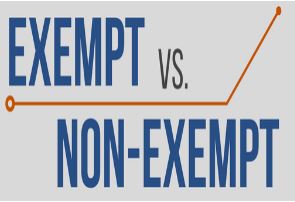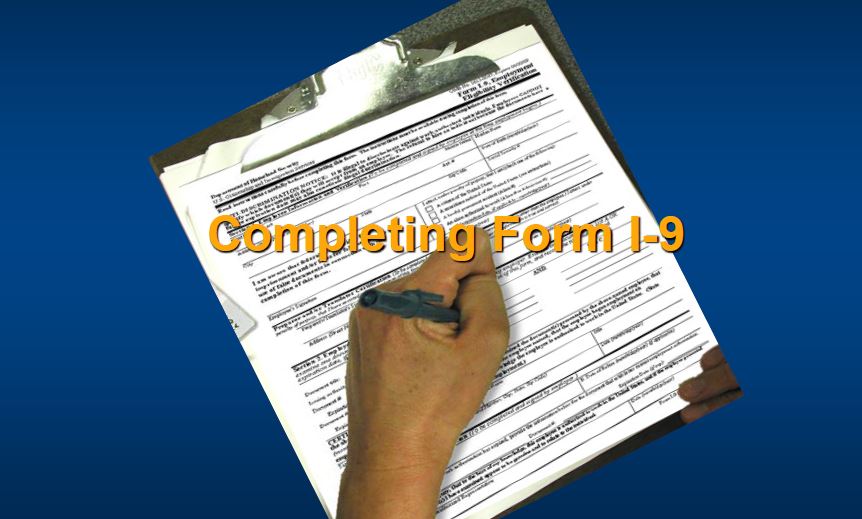
by editor | Oct 30, 2022 | Employee Onboarding, Human Resources, Payroll
The Fair Labor Standards Act (FLSA), enacted in 1938, has four major provisions: regulations for minimum wage, overtime pay, record keeping and child labor law. It also introduced standards for exempt and non-exempt employees. As it relates to the FLSA, exempt means free from an obligation of overtime pay. Note that FLSA regulates the Federal standards; the states may have different regulations in each of these areas.
What is an exempt employee?
Exempt employees are not eligible for minimum wage, overtime regulations, and other protections that are extended to non-exempt employees. Exempt employees receive a set salary every pay period. Exempt employees are typically salaried workers and often fill executive, supervisory, or administrative positions.
Which employees are covered under the FLSA law?
Enterprise Coverage: If a business is covered then all employees of the business are entitled to FLSA protection. What businesses are covered under enterprise coverage?
- Business has at least two employees and does sales of at least 500,000
- Named enterprise coverage: Hospital, business providing medical or nursing care for residents, school, preschool, or public agency, whether private or non profit
Individual Coverage: Individual employees in an organization may be entitled to FLSA protection even if the entire organization is not entitled to FLSA protection
- Individual is engaged in activity that involves working across state lines (interstate business) on a regular basis
- Domestic service workers (e.g., housekeeper, cook, babysitter)
Should an employee be classified as exempt or non-exempt?
- An employer should consider all employees as non-exempt and overtime eligible unless they can meet a specific exemption under federal or state law
- An employee who remains in the same job position should not move back and forth between exempt and non-exempt. Further, an employer cannot decide that they want to make an employee exempt. The regulations determine FLSA classification.
- Job title does not determine classification
Employers must correctly classify their employees as exempt or non-exempt or they run the risk of accruing compliance violations.
Can any worker qualify as an exempt employee?
An employer may wish to classify all employees as exempt employees – in this way avoiding the requirement to pay time and a half for overtime hours worked. However, not all employees are eligible to be classified as exempt employees.
The Department of Labor (DOL) has established guidelines to determine who is eligible to be considered exempt. The qualifications generally fall into three categories: salary exemption, nature of payment, and job duties. An employee must pass the tests in all three categories to qualify for exempt status.
Exempt employees test #1: total earnings
The first test to qualify an employee for exempt status is that the employee must earn the salary threshold set by the FLSA to be exempt. The minimum salary threshold of the FLSA changes every year. In 2021, the required minimum employee compensation to have exempt status was $684 per week ($35,568 per year). This salary threshold must be met regardless of being part time or full time. If the salary threshold is not met, the employee may not be classified as exempt (with an exception for teachers, doctors, and lawyers).
Exempt employees test #2: nature of payment
The second test to qualify an employee for exempt status is that the employee must be paid on a salaried basis, where compensation is not reduced due to quantity or quality of work.
Exempt employees test #3: job duties
The third test to qualify the employee for exempt status is whether the employee meets the job duties that qualify for exempt status. There are only certain job duties that qualify an employee for exempt status. These job duties involve a higher level of expertise or knowledge or require the employee to hold certain professional roles. There are several categories of job duties exemptions:
Executive exemption: employees who would qualify for an executive exemption would
- Regularly supervise employees
- Be responsible for managing part of the business
- Play a role in hiring employees or in delegating tasks
Administrative exemption: employees qualifying for an administrative exemption would
- Perform office jobs directly related to business operations or management of the organization and its customers
- Exercise independent judgement over business decisions
Professional exemption: employees qualifying for a professional exemption would
- Perform job duties that require specialized education
- Have a college degree or higher in their field
Computer exemption: employees with this exemption would
- Have a computer related role
Outside sales exemption: employees qualifying for this exemption would
- Have a primary duty of making sales or securing contracts or orders
- Conduct their work outside of the business’ premises
Where can you find out more?

by editor | Oct 28, 2022 | Employee Onboarding, Human Resources, Human Resources, Payroll
When should a worker be classified as an employee versus as an independent contractor?
What is the difference between these two types of workers? Why is it important for a hospice agency to properly classify the workers who are providing services? Why is it important to determine whether the workers providing services are independent contractors or employees?
Why would an employer want to classify workers as independent contractors instead of employees?
A business must withhold income tax, withhold and pay social security and Medicare, and pay unemployment taxes on the wages paid to employees – but not those paid to independent contractors. By classifying workers as independent contractors, an employer can avoid payroll taxes, unemployment insurance and workers compensation coverage. The employer can also save on the cost of all the benefits that are offered to employees but are not offered to independent contractors.
Are there consequences to misclassifying workers?
The IRS is increasing its efforts on auditing companies, with a particular focus on worker classification. The liability from an employment tax audit that identifies misclassified workers may be quite significant. A business that classifies workers as independent contractors instead of employees may be subject to retroactive tax withholding, penalties, and interest.
How can an agency differentiate between an employee and an independent contractor?
An employee is typically a person who is providing services where the employer controls what services are provided and how the services are provided. Specifically, the employer has the right to control the details of how the worker performs the tasks. There are three key areas to consider when evaluating whether a worker is an employee or an independent contractor:
- Behavioral control: Is the worker free from control or direction over performance of the tasks? Or, does the employer have the right to control how the worker performs the tasks?
- Financial control: Is the worker engaged in independently established business or occupation? Or, does the employer control the financial and business aspects of the worker’s job? For example, does the employer control how the worker is paid? Does the employer provide the supplies and the tools that the worker requires to complete the tasks?
- Relationship between the parties: Does the employer provide the worker with benefits such as insurance, vacation pay, or pension plan? Are the services that are performed a key aspect of the business?
By considering the different aspects of behavioral control, financial control, and the relationship between the two parties, and employer can determine whether a worker is more appropriately classified as an employee or as an independent contractor. Each of these three key areas involves multiple factors. Determination of whether a worker is an employee or an independent contractor is not an objective test and some of the factors are more important than the others, depending upon the industry and type of independent contractor being evaluated.
Where can you find out more?

by editor | Oct 12, 2022 | Employee Onboarding, Human Resources, Payroll
A Form I-9, also known as an Employment Eligibility Verification form, is a form required by the U.S. government for each employee. The information on this form and its supporting documentation:
- Verifies the employee’s identity
- Verifies the employee’s eligibility to work in the U.S.
When must the Form I-9 be completed?
The Form I-9 is completed as part of the new hire paperwork provided by an employer during the hiring process.
Each new employee must complete and sign the Form I-9 employee section by the end of their first day of employment. The employer must complete and sign the employer sections by the end of the new employee’s third day of employment.
The employer must verify the employee’s eligibility and identification documents and record the document information on the Form I-9. Employees must present original documents, not photocopies, for verification.
Who is required to complete an I-9?
An employer must fill out and retain an I-9 form for all employees, whether or not they are U.S. citizens.
Are there instances where an I-9 form is not required?
A Form I-9 is not required for an independent contractor. A Form I-9 is also not required for employees hired on or before November 6, 1986.
What should you do if you do not receive an I-9 form?
A Form I-9 is required for continued employment. An employer that does not maintain these forms may face fines or criminal penalties.
If an employee fails to provide his employer with the necessary documentation or receipt for a replacement document within three business days of start of employment, the employee can be terminated. If an employee provides a receipt for replacement of missing documents, he has 90 days to present the replacement documents.
Must an employer retain the I-9 form?
An employer must store the Form I-9 and supporting documents together. The employer must ensure that only authorized personnel have access to the stored forms. The forms must be available within 3 days of an official request for inspection.
The forms must be retained for either three years after an employee’s start date or one year after their termination, whichever is later.
Where can you find more information?
Additional resources are available here:



